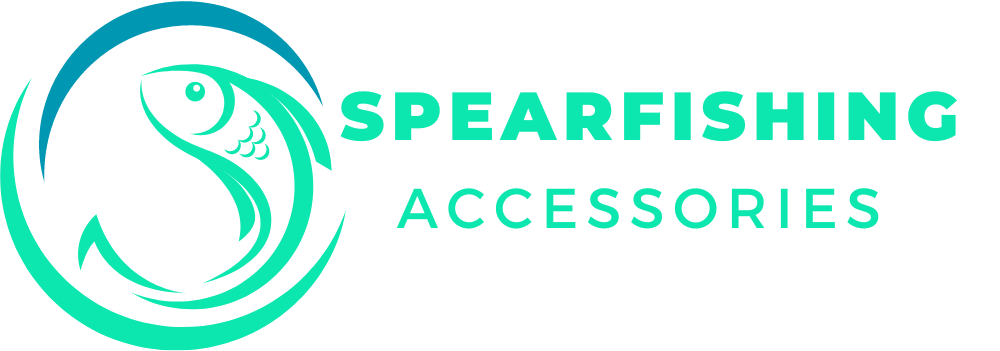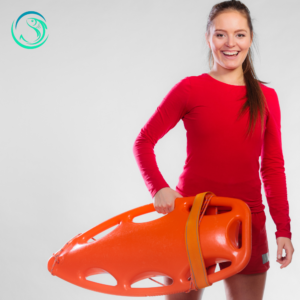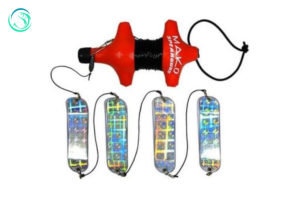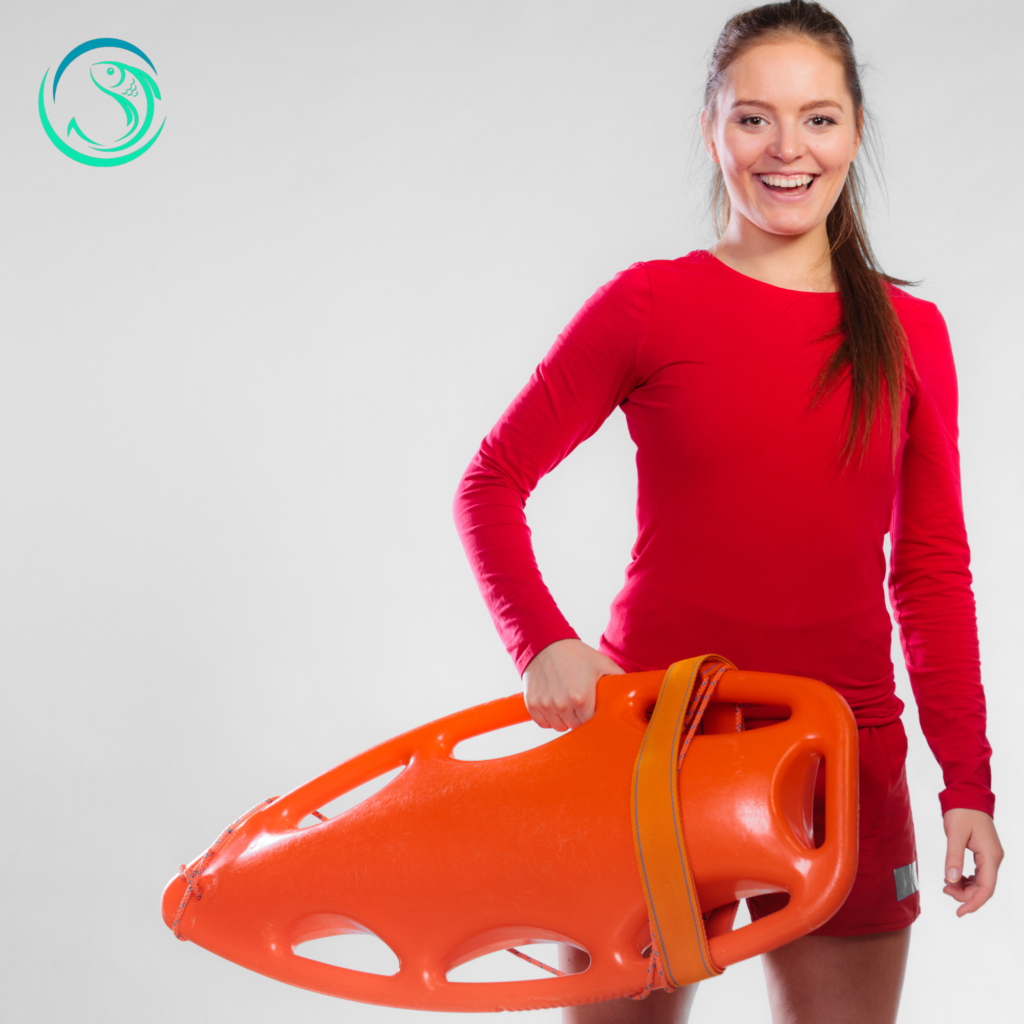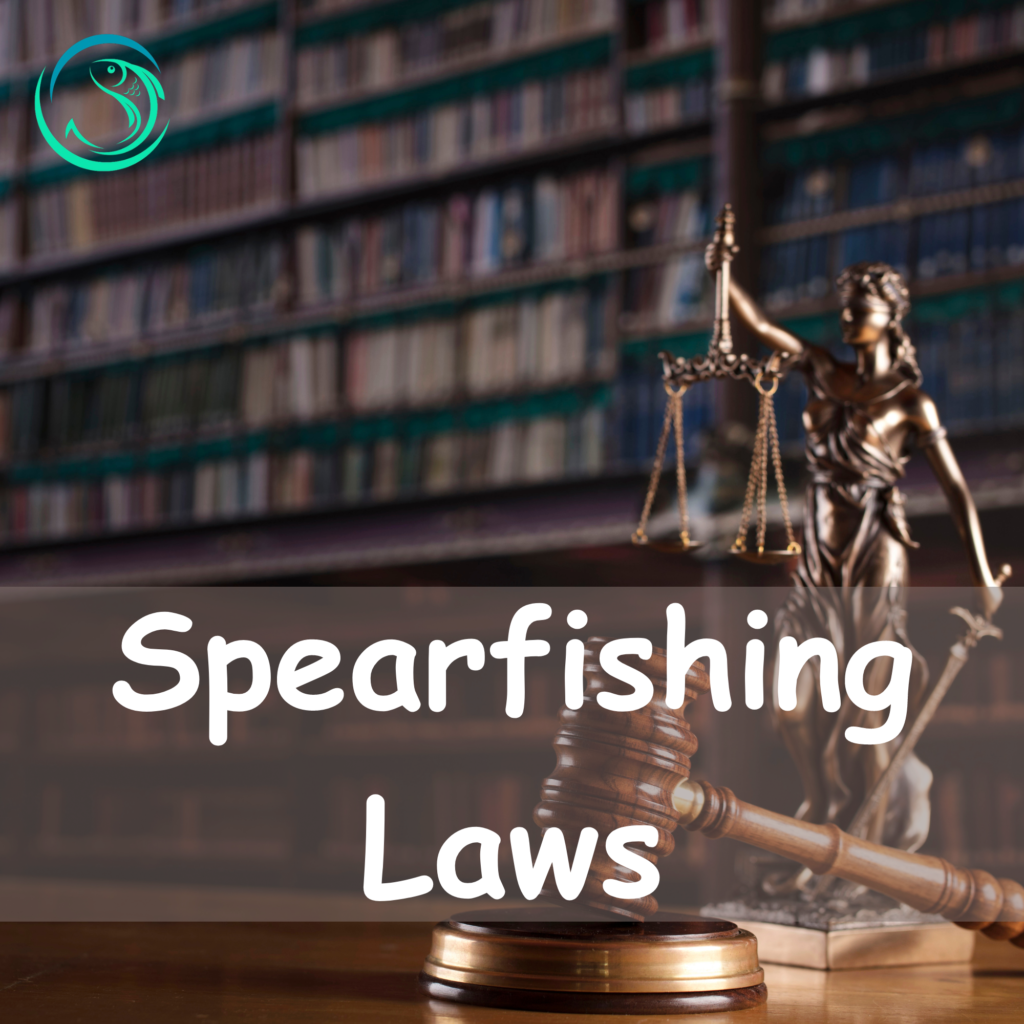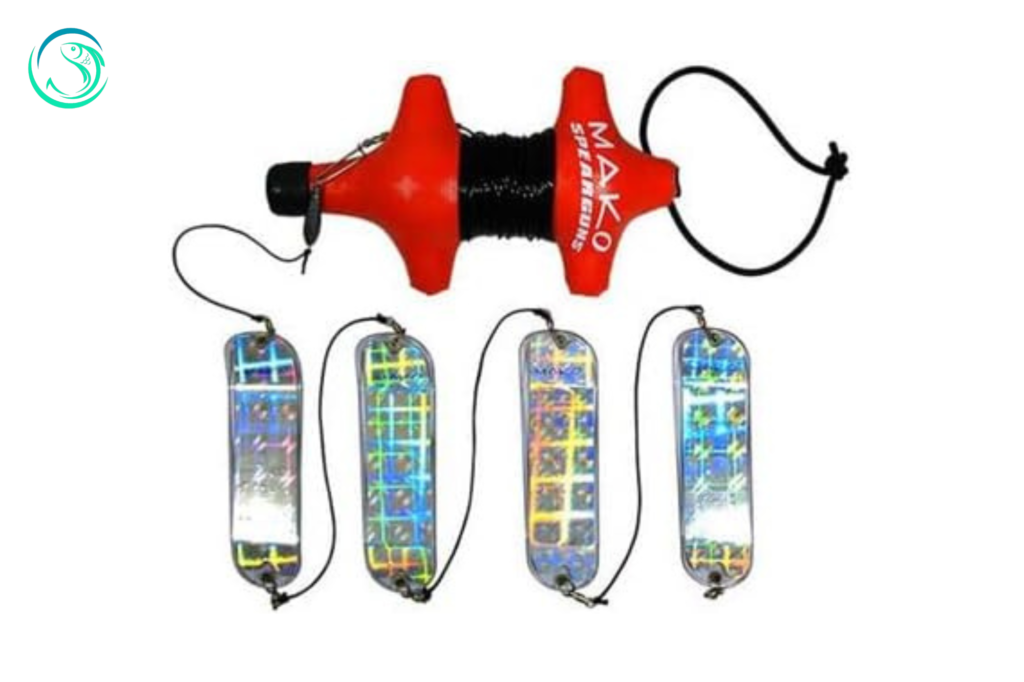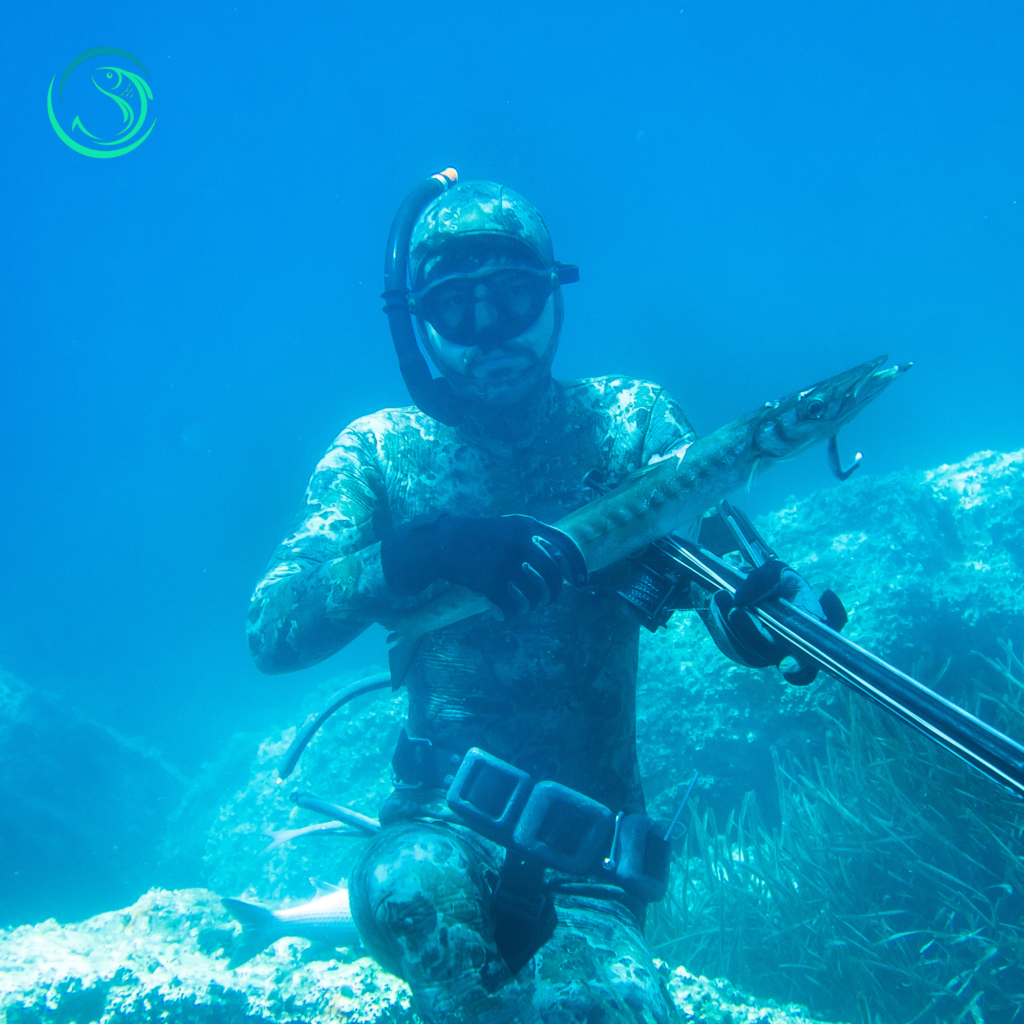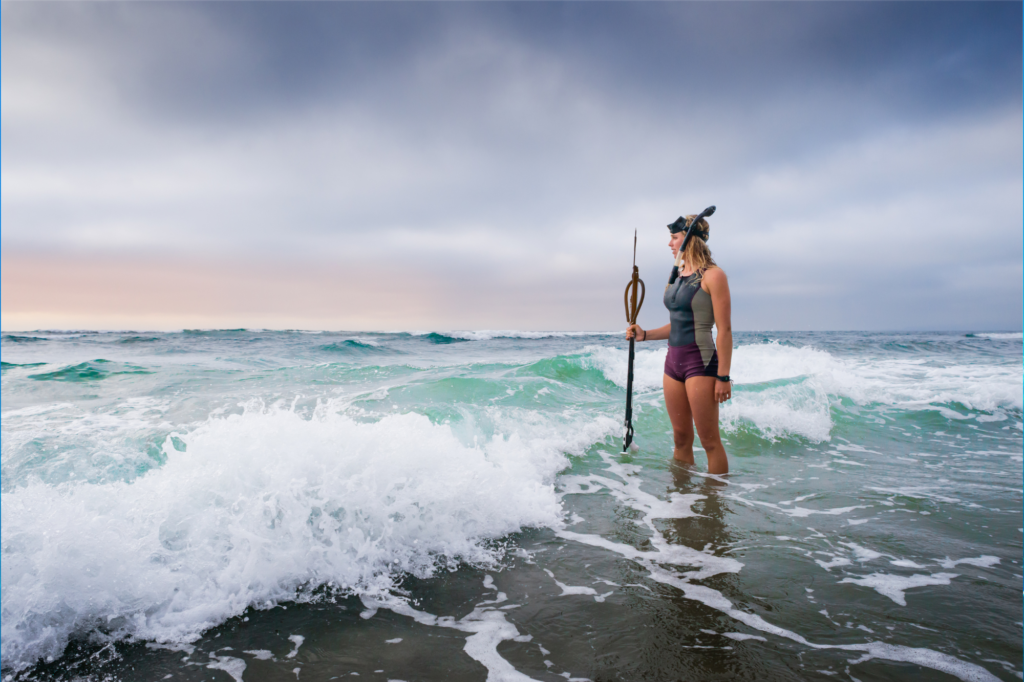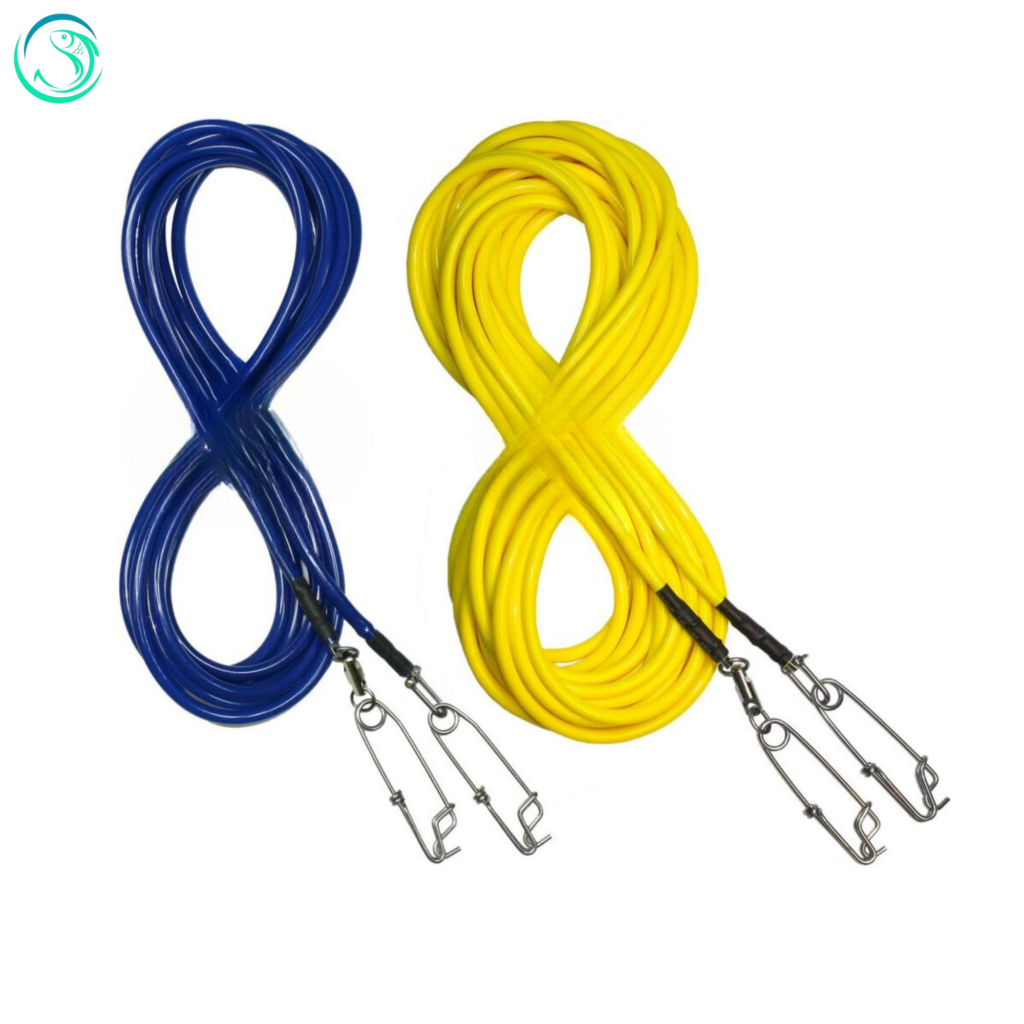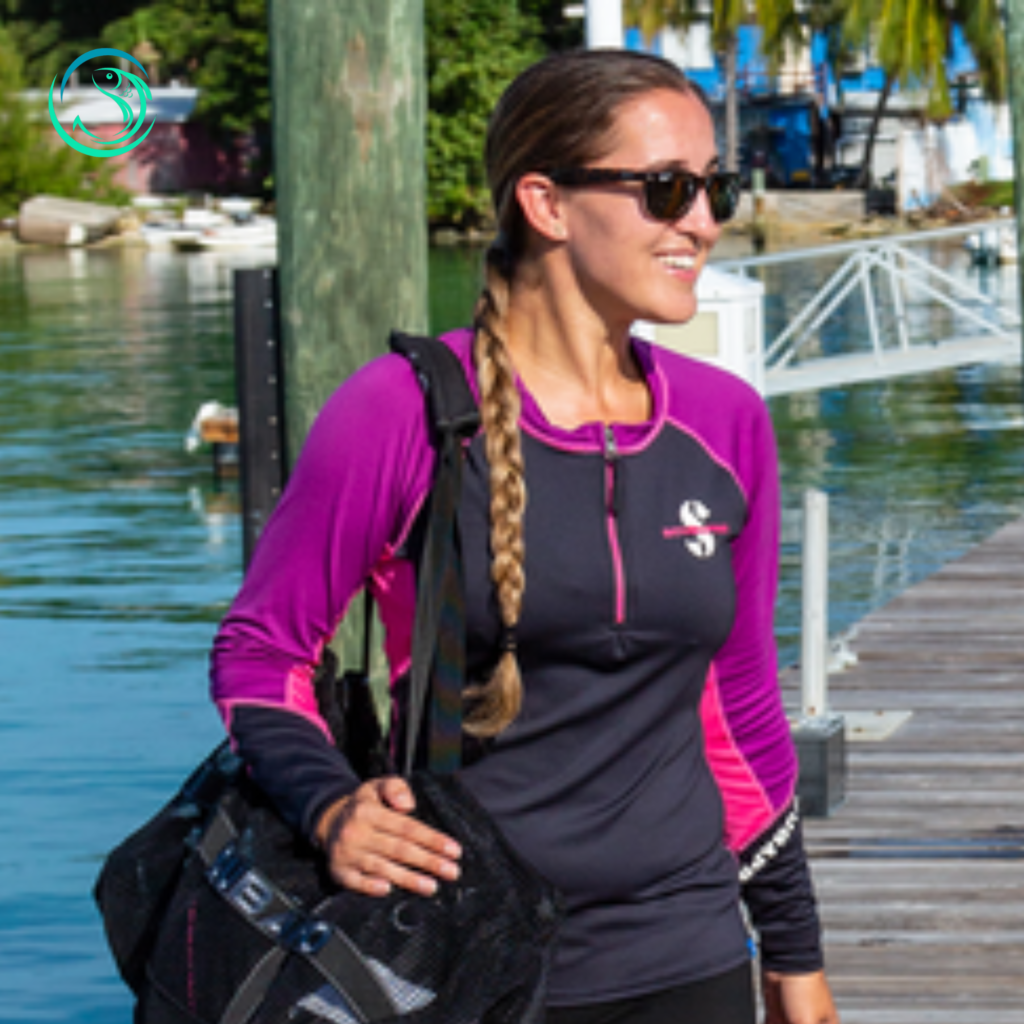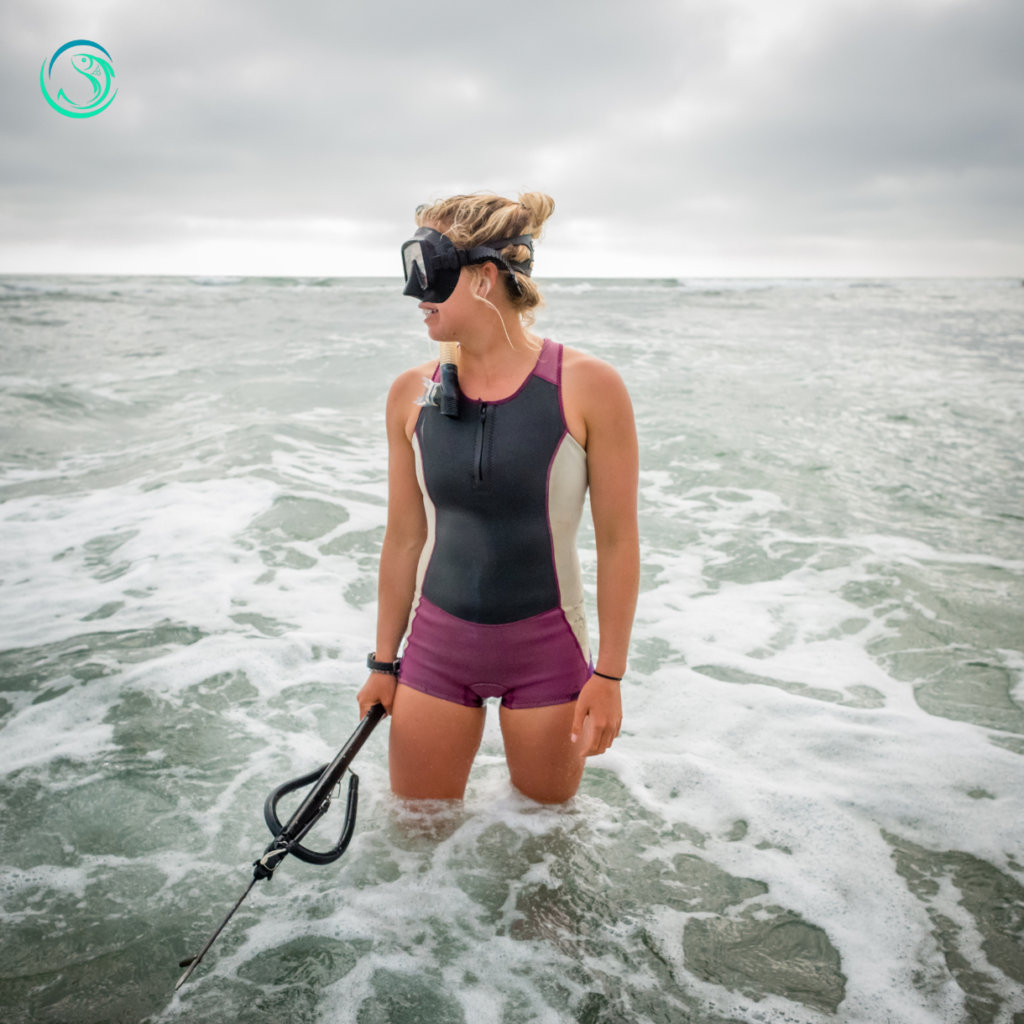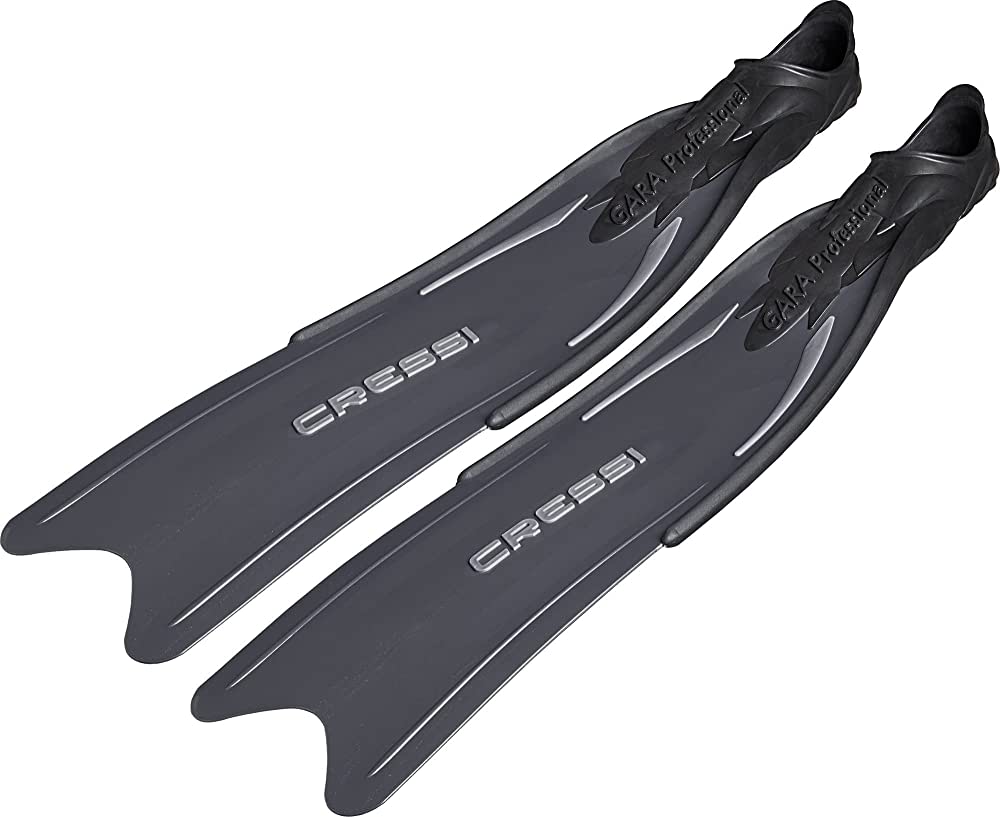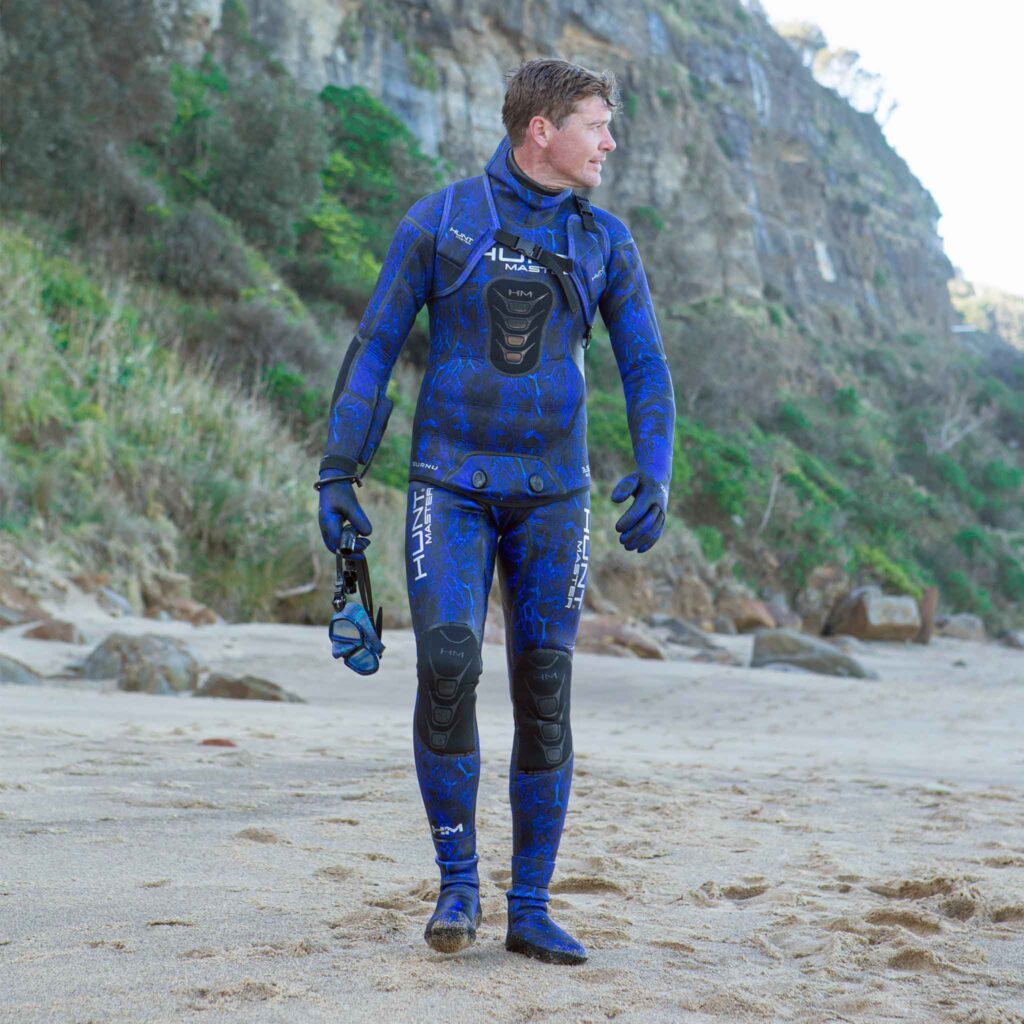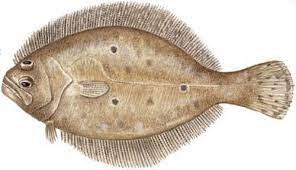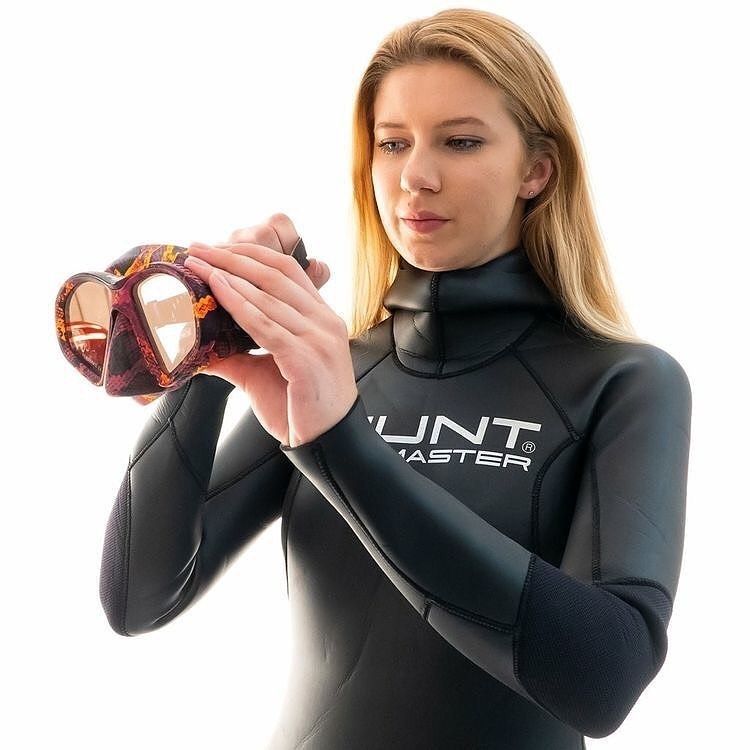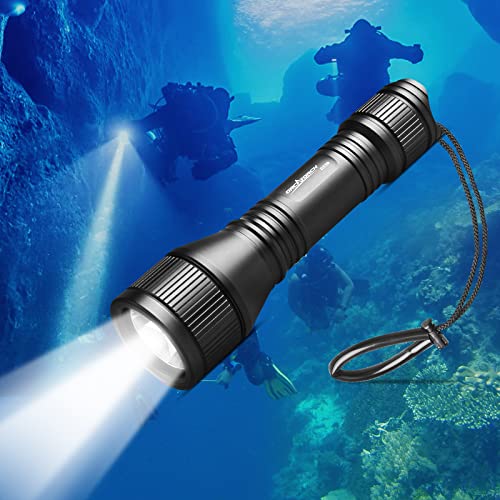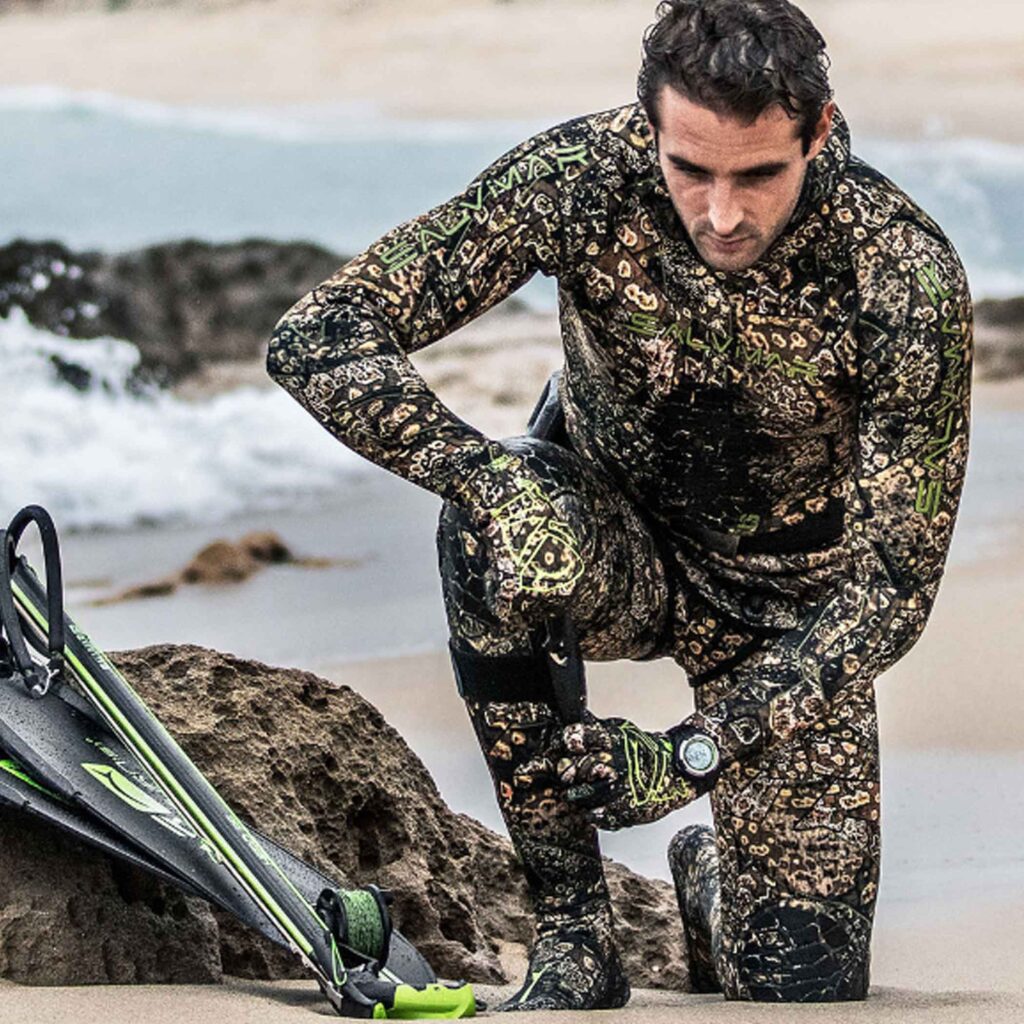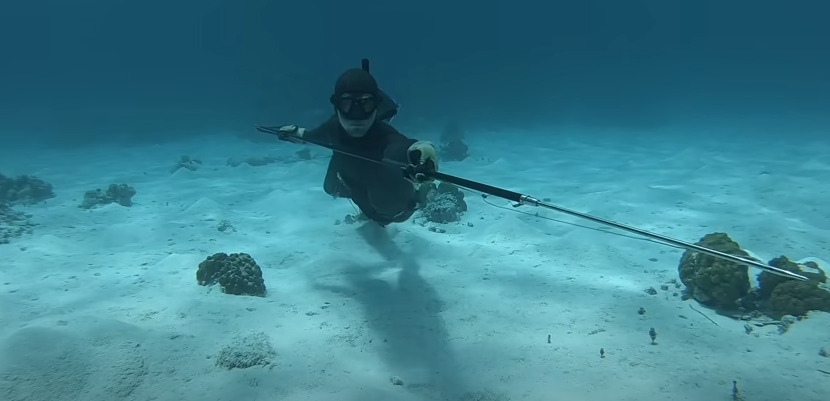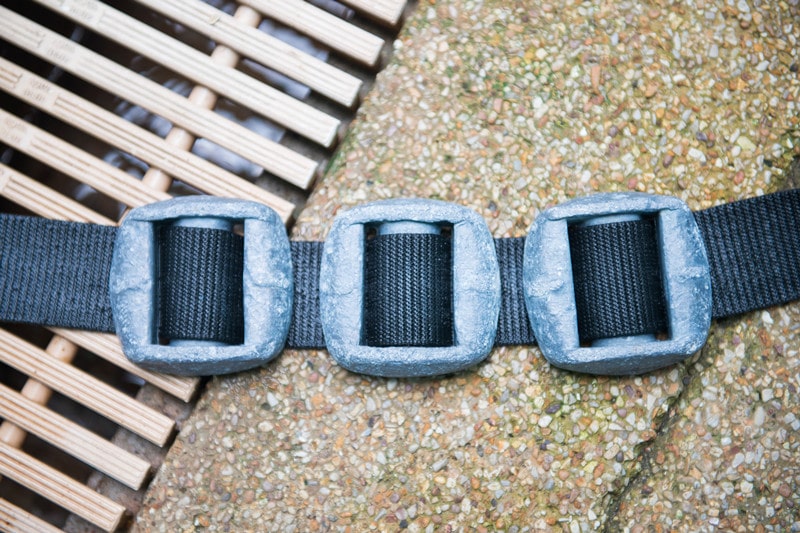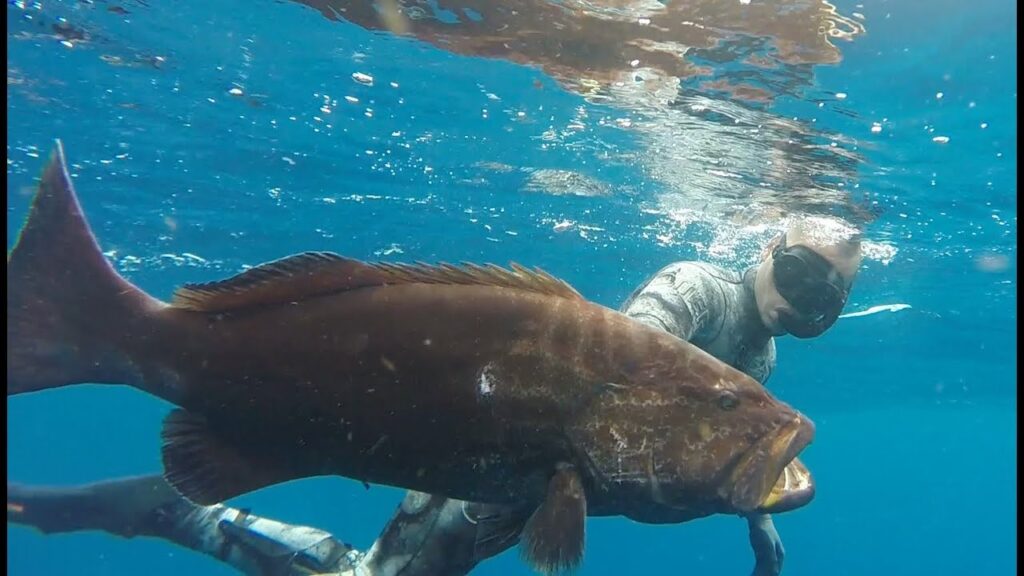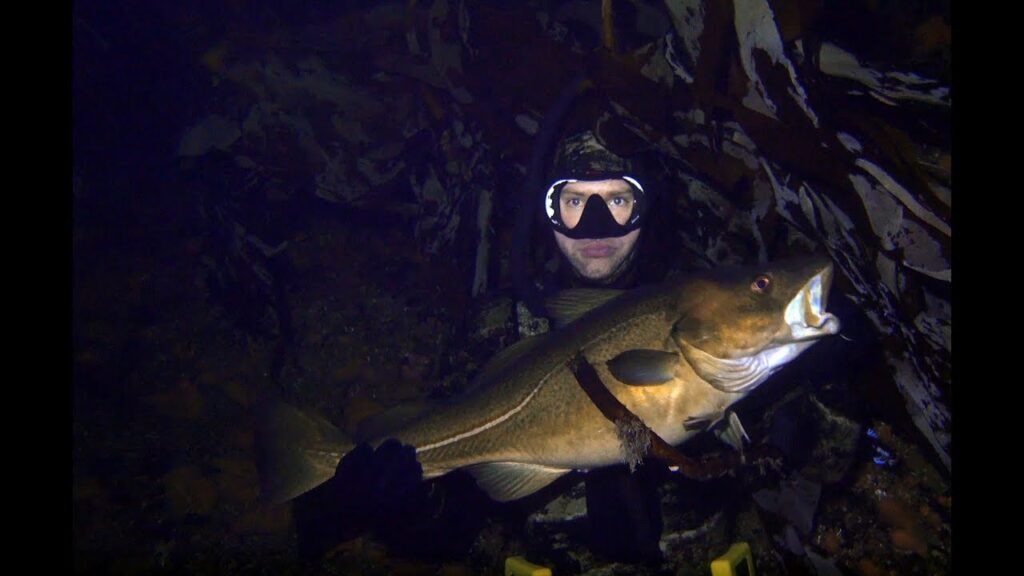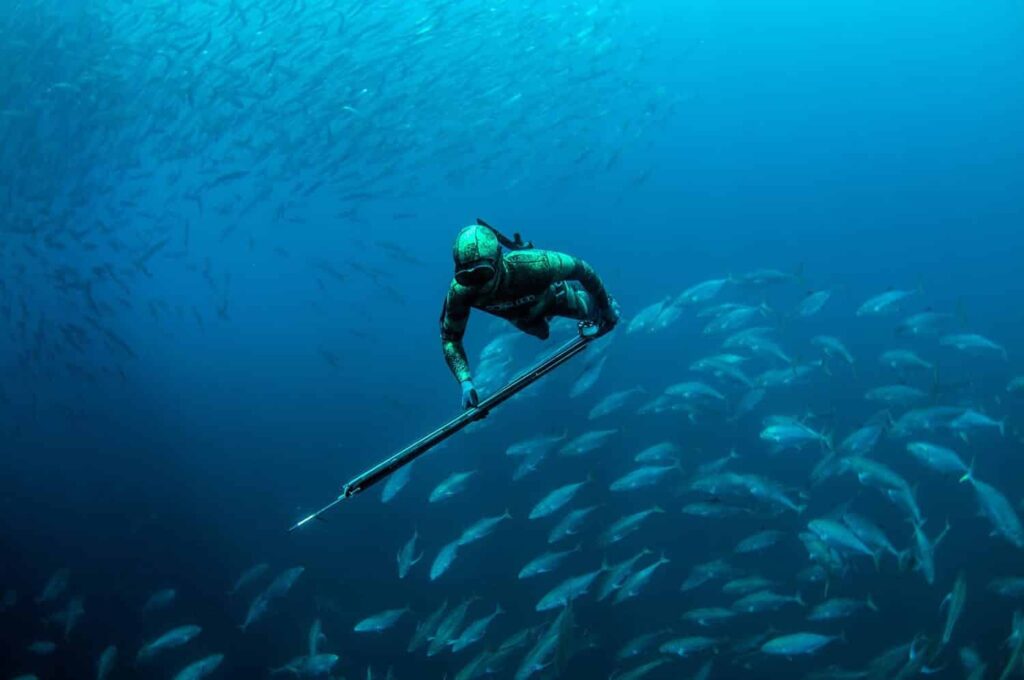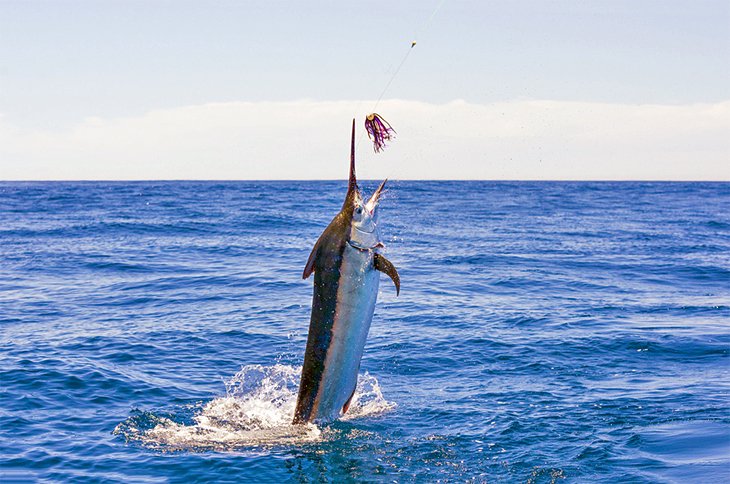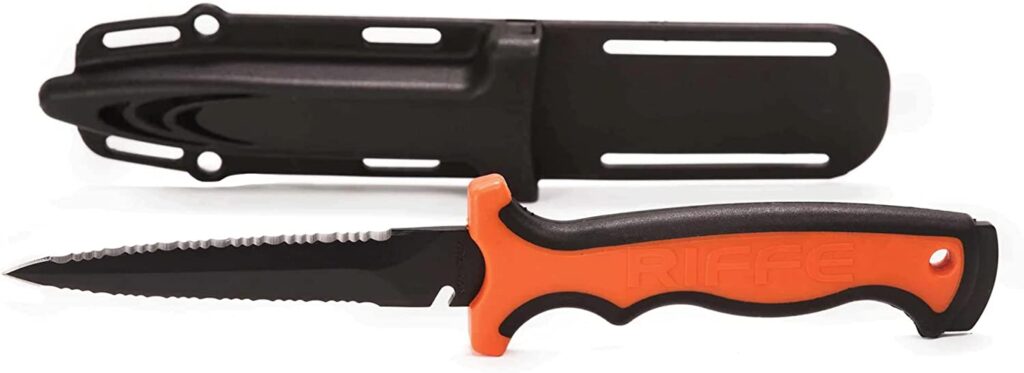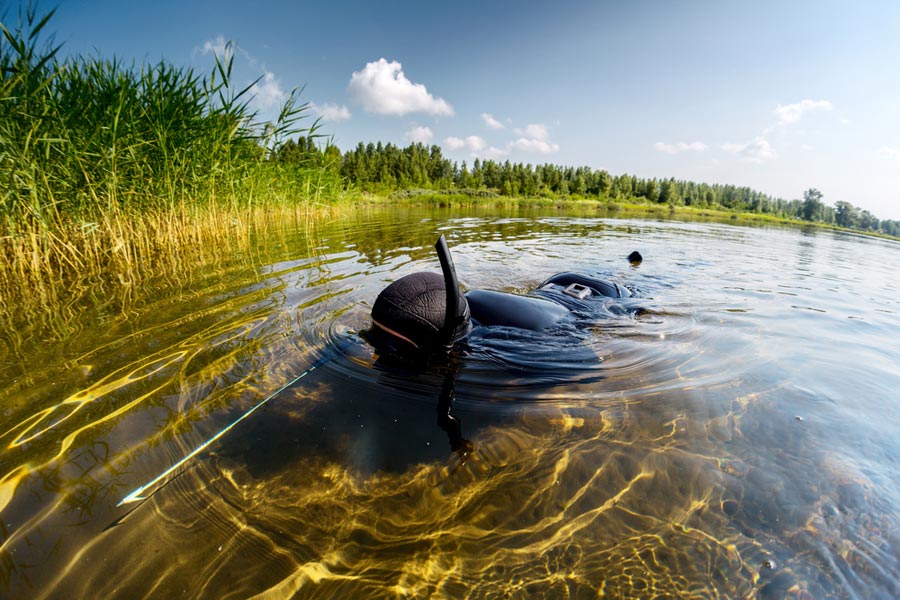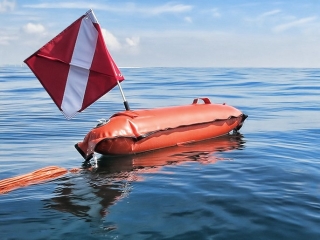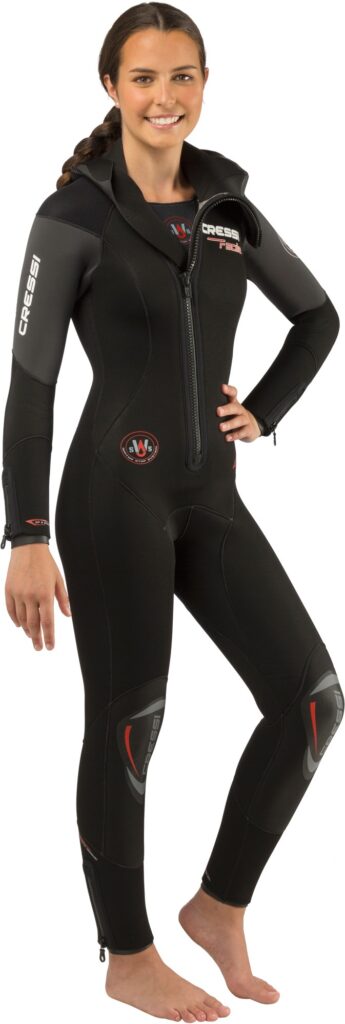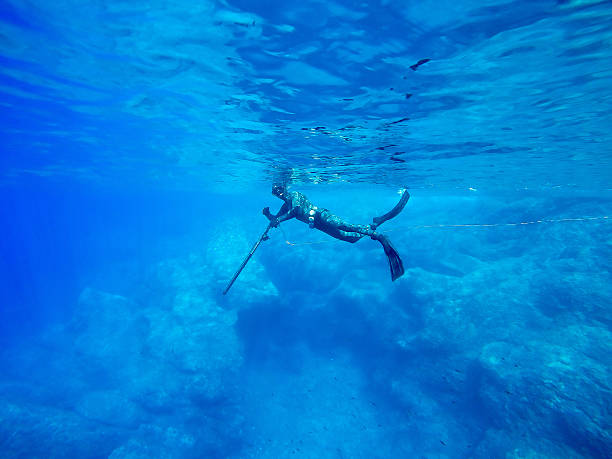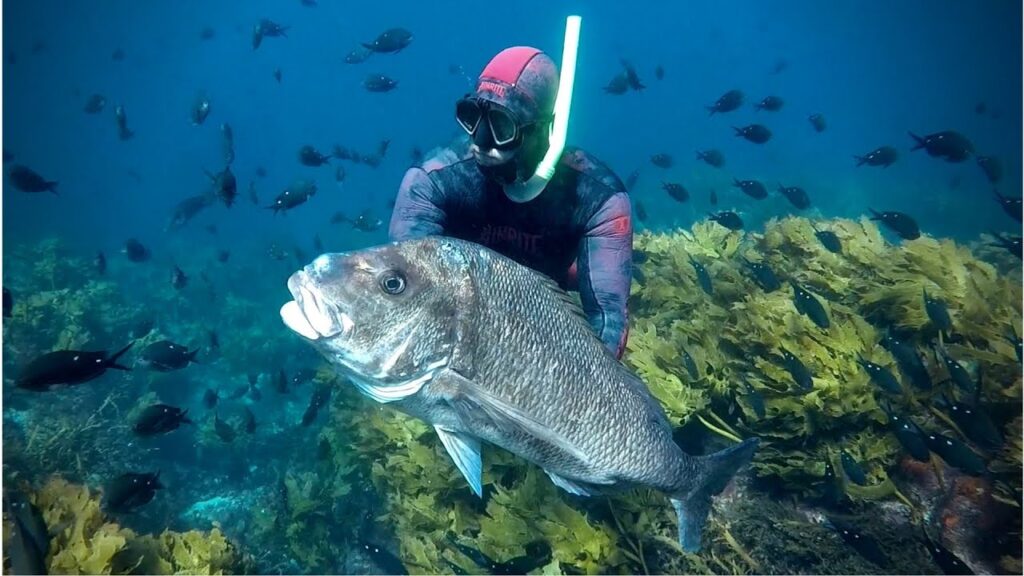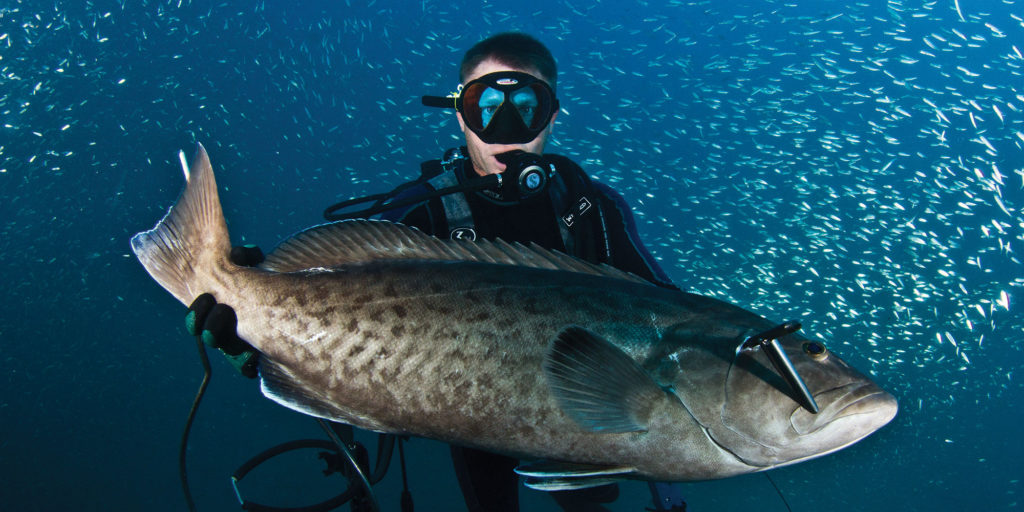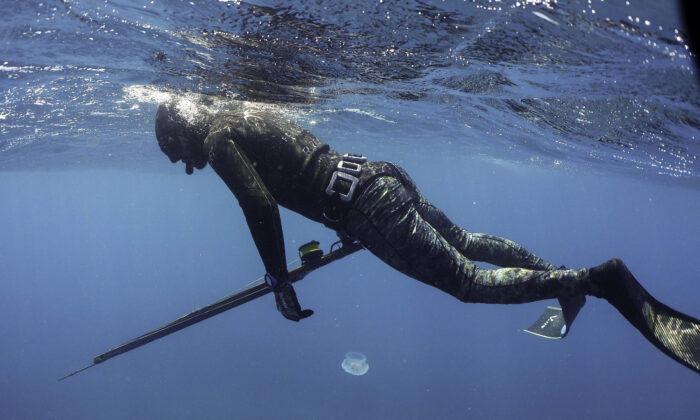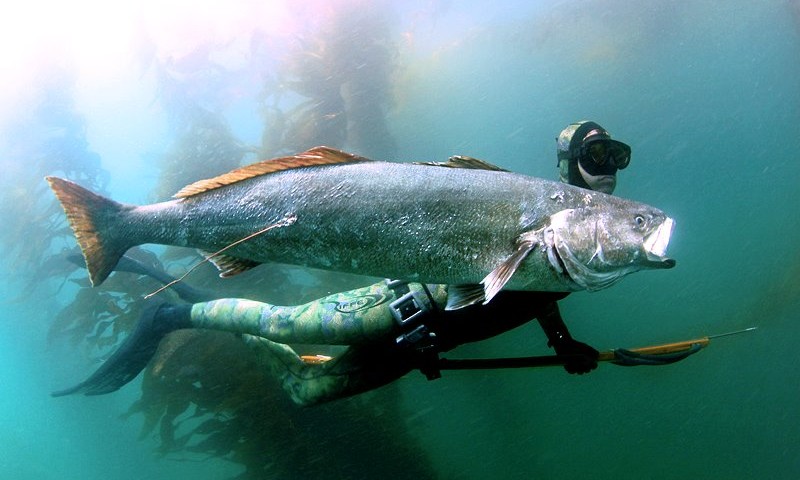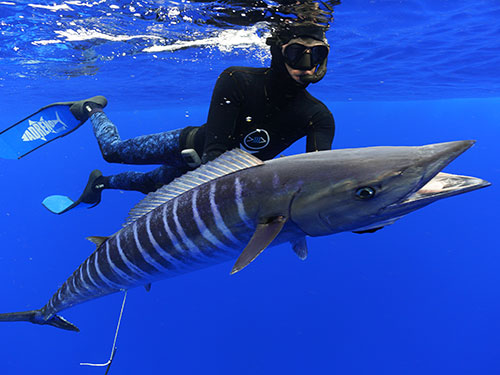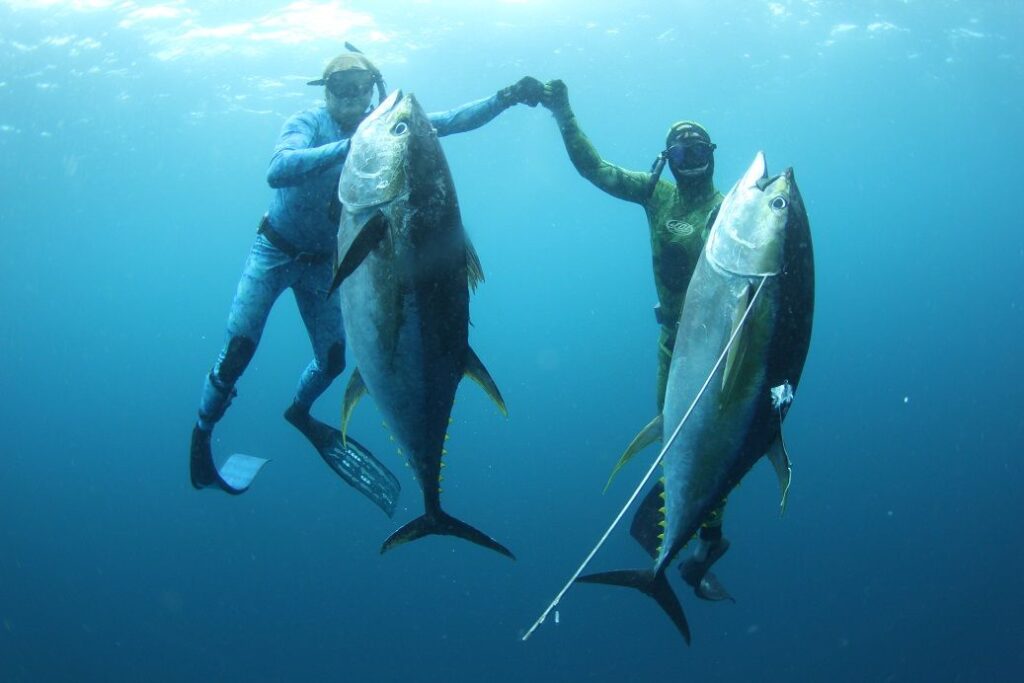Spearfishing in Hawaii may sound easy because the waters are warm and beautiful and filled with fish.
The reality, though, is that it’s not as simple as just jumping in the water and catching a meal or two every day.
Hawaiian spearfishing requires specialized equipment, knowledge of how to approach fish underwater, how to keep yourself safe while spearfishing and much more.
As we know Hawaii’s waters are filled with fantastic fish and other marine life, but it can be hard to catch them if you don’t know what you’re doing- and just as important, if you don’t have the proper gear.
Here is an ultimate guide on how to spearfish in Hawaii and make sure that you get the most out of your trip to one of America’s most beautiful states.
With this guide, you will learn how to prepare with your fishing equipment, find the best spots to fish, and all the dos and don’ts in the area!
Let’s dive in!
Why is Hawaii so special to Spearos?
Hawaii is a paradise where spearfishers can find endless opportunities to dive and hunt. Spearfishermen have been around since the time of ancient Hawaiians and they are still around today hunting fish with a Hawaiian sling.
Spearfishing on Oahu is one of the best places for spearfishing in Hawaii because it provides great underwater visibility, currents, food sources, and close proximity to shore.
There are many types of fish you can spearfish in Hawaii such as ono, uku (skipjack tuna), manini (filefish), and opah.
Regulations for spearfishing vary from island to island so be sure to learn about them before you go.
Here’s the quick breakdown of what makes spearfishing in Hawaii an awesome experience!
1.Diversity:
Hawaii has some of the most unique and diverse marine life found anywhere on earth which means there are tons of cool creatures to see and catch during your trip.
In fact, there are over fifty different species that live just off the shores of Honolulu alone!
Plus, if you’re coming from somewhere other than the US mainland, don’t forget that America Samoa and Guam also belong to this beautiful state- you get a three-for-one deal!
2. Ideal conditions:
Spearfishing on Oahu is one of those locations where, if you go at just about any time during any month, you will have ideal conditions to catch fish. The reason for that is all thanks to it being so close to shore and because of its geographical location near an island chain.
3. Hawaii’s weather, wind, and temperature:
The climate in Hawaii is usually between 70 degrees Fahrenheit and 90 degrees Fahrenheit year round but the trade winds keep it nice and breezy making it perfect for swimming or diving. As long as you bring enough sunblock, salt water isn’t too much of a concern either!
4. Everyone can fit in:
Whether you want to travel solo, with a group of friends, or even with your family, there are lots of options when it comes to diving and Hawaii spearfishing.
Depending on what type of area you want to explore and how comfortable you feel underwater there is something out here for everyone.
Hawaii has some of the most unique and diverse marine life found anywhere on earth which means there are tons of cool creatures to see and catch during your trip.

5. Get a tailored experience:
Not only does the variety of fish available make spearfishing in Hawaii exciting, but you also have several different ways to take part.
You can charter a boat with a captain and crew, hire local guides who know their territory well, take lessons from expert instructors or teach yourself through videos and books.
6. Significance and Impact:
Spearfishing in Hawaii is really significant and impactful for people because it lets us slow down and appreciate the beauty of nature by giving us a glimpse into what the world would look like without humans.
It teaches us respect for our environment, something we need more of these days!
Learn Spearfishing Hawaii Rules and regulations
Hawaii doesn’t require a spearfishing permit to pole underwater. in-state residents or visitors also does not need any license to spearfish on Hawaii.
However, if you want to catch large numbers of fish, or even see many different types of fish while hunting, then it’s a good idea to charter an oahu spearfishing charter where one or two licensed professionals will take care of everything for you.
It’s the Department of Land and Natural Resources (DLNR) that’s the state’s fish and game warden, and they’ll ticket people for crossing the boundaries, exceeding bag limits, or violating size limits.
Check out regulated species and regulated areas on their website. The rules in Maui county are different from the rest.
You can only get your gear back after a court appearance and paying a hefty fine if you’re in violation. Also, divers must stay within 100 feet of dive flags on all islands.
There may be different bag limits in local communities besides the DLNR. This usually does not apply to easy-to-access or beginner spots, but ask around for more remote areas where local divers may reside.
There are some examples of this in local communities, such as the imposition of limits on certain species or the use of non-official seasons for harvesting.
For many people in Hawaii, spearfishing is a way to put food on the table for the family instead of a simple sport.
Please fish with aloha to both the local community and the fishery if you do fish here.
The most important thing is to be safe when handling any type of fishing equipment, so always wear a wetsuit and fins for protection.
The best time of year for spearing fish in hawaii is during the winter months between October and March.
Top Spearfishing Spots In Hawaii
The state of Hawaii is made up of approximately 8 large islands, but it has 137 more islands and includes five counties as well.
Oahu, Maui, and the Big Island offer the best spearfishing opportunities in the Hawaiian archipelago.
Kauai also has excellent locations if you want to go spearfishing underwater, but these three legends dominate the world of underwater fishing.
Here are a few great places to start.
Kailua-Kona
There probably isn’t a more prolific spearfishing area in the world than the area around Kailua-Kona.
Moreover, there are plenty of spearfishing instructors here as well as equipment stores so you will not be short on anything.
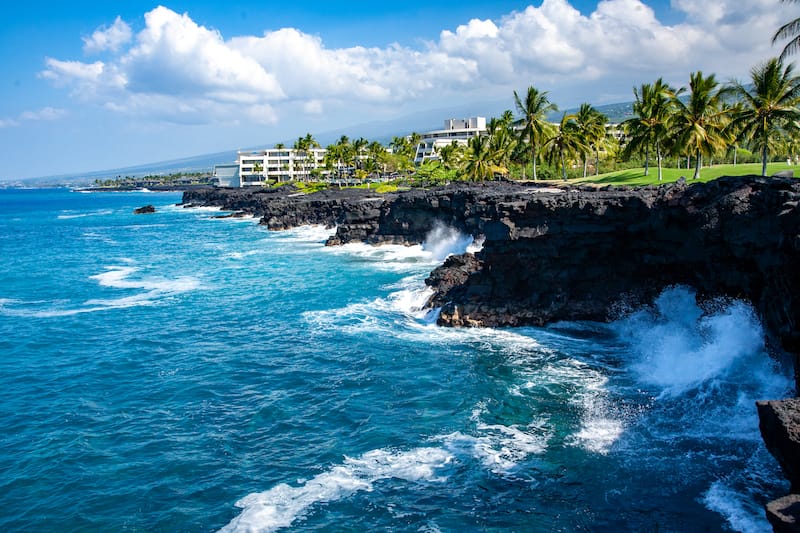
There are many ways to get into the water on the Big Island, including spearfishing charters or diving off the coast while diving the reefs.
Honolulu
There are many spearfishing equipment shops and diving centers in Oahu’s southern part, and Honolulu is located at the center of spearfishing activity on the island.
If you are planning to spearfish in Kailua-Kona, you have the option of embarking on an expedition from shore or embarking on it from a boat.
Anini Beach
Anini Beach is one of Kauai’s most beautiful treasures hidden in the northern part of the island.
While Anini Beach is generally known as one of the best places to bask in the sun, swim, and snorkel, it is also a great location for spearfishing.
The calm waters of the lake make it an ideal spot for beginners to learn how to spearfish as well.
Lahaina
It is known as the “windsurfing capital of the world,” but it also boasts spectacular spearfishing spots. As the perfect starting point for exploring the world of spearfishing in Maui, Lahaina is the best place to get started.
There are top-notch instructors here who provide you with an underwater world that is vibrant and full of life.
There are a few areas around Hawaii where spearfishing is strictly prohibited or partially restricted, even though spearfishing is common there.
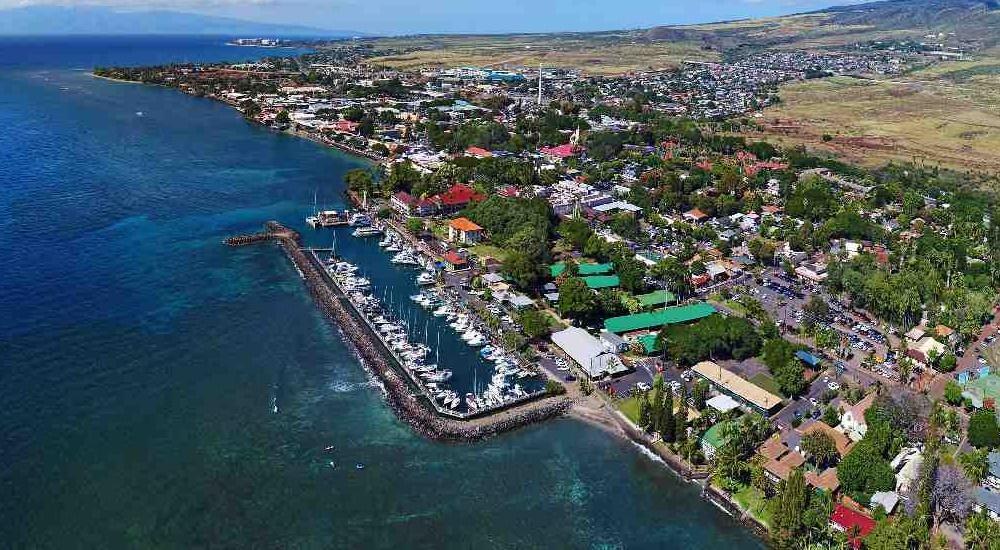
It is possible to spearfish only during daylight hours along the shoreline of Diamond Head on Oahu, as an example.
However, there is no opportunity to spearfish anywhere along the shoreline of Waiakea Public Fishing Area on Maui.
Please visit the website of the Division of Aquatic Resources (DAR) if you would like to know more about the regulated areas.
Hawaii Spearfishing Fish Types
Whenever you’re spearfishing Hawaii, you should know what kind of fish you’re catching before you put on your wetsuit.
Fish like omilu and awa are transient and will travel all over the reef, but if you do your research, you’ll have a pretty good idea what to look for.
A shore dive in Hawaii typically targets the following reef fish species: kole, manini, menpachi (and other types of redfish), uhu, papio/ulua (and other species associated with them), mu, and all kinds of goatfish.
A pelagic diver from a boat hunts mahi mahi, ahi (tuna), and associated species, such as marlin (including striped marlin), among other species that may be aggregating around a foothold area development (FAD).
The first thing you need to focus on is understanding the size and bag limits for your chosen fish species in order to avoid any run-ins with the DLNR.
In addition, it’s an excellent idea to watch some YouTube videos in order to get a better understanding of how certain species of fish behave, as this will give you a lot of insight as to what to expect and what actions to take in the water.
Spearfishing in Hawaii Guidelines:
- As a general rule, for the vast majority of fish, it is best to remain as non-threatening as possible with a low profile in order not to endanger them.
- When spearfishing in Hawaii, the aspetto – or ambush – style of spearfishing is the most effective. The spearos dive to the bottom and wait quietly on the bottom until the fish come to investigate them.
- While the fish in Hawaii are intelligent (because they have been under fishing pressure for as long as the islands have been inhabited), this does not mean that they are not curious.
- Here’s how to capitalize on their curiosity:
- Your prey won’t like direct eye contact.
- Move smoothly with minimal jerking movements, especially with your head, and don’t be threatening with your body movement.
- Stick your body in a gully or behind coral heads to hide your body
- Keeping your fins low to the ocean floor is important; keep track of them.
- To minimize drag and lower your profile, tuck your gun to your side. If you extend your gun, you look like a 9-foot predator because your gun and fins are both 9 feet long.
- Stimuli affect fish differently:
- Light scratching on coral reefs attracts crustaceans and coral eaters like uhu, goatfish, and mu.
- Fish like uku and omilu/papio that are semi-pelagic and predatory respond well to grunting. You can grunt at goatfish too.
- Get all the marine life’s attention by dusting (grab some sand at the bottom and put it in front of you).
- The flashing of sunlight in the water also attracts a lot of fish. Reflective surfaces such as a spinning spoon or tubes with reflective tape are also good at attracting fish because they reflect sunlight in a very visible way.
Want to learn more? Check out 11 Simple Spearfishing Techniques Beginner Needs to Know!
Hawaiian fish species are unique to this side of the Pacific, and you can’t find them anywhere else. Sure, you can try looking for them in the vast ocean, but why waste your time when Hawaii has everything you need.
The Aloha State has it all, from coral reefs to bluewater monsters! The fish you can chase range from parrotfish to tuna.
Choosing which fish to pursue depends on your preferences and experience.
Kumu (goatfish)
Summer and spring are prime times for finding goatfish near sandy beaches and reefs in Hawaii. They live in depths of up to 300 feet.
Bright pink colors make Kumu fish easy to spot. The can grow up to 20 inches long and weigh around 5 pounds.
Uhu (Parrotfish)
One of Hawaii’s most recognizable fish types is the parrotfish because of its colorful patterns and fused teeth that look like a parrot’s beak.

Rocks and coral reefs are good places to find them. Outer edges of reefs are also a big spot for them. The uhu fish grows to 2 feet long and weighs about 15 pounds.
Kole Tang (Spotted Sturgeonfish)
In the Tang family, the Kole Tang is a prominent member. When they’re not schooling, it’s super easy to pick them up.
Their eyes are yellow with blue rings around them, and they look dark brown. Usually, they’re found at 150-foot depths in reef areas. Their length can be up to 7 inches and they weigh about 1 to 2 pounds.
Nairagi (Striped Marlin)
Of all the marlin species, the Nairagi fish is probably the most popular. They have blue scales above and silvery scales below.
On their sides they have vertical blue shapes and pointed dorsal fins. Usually, striped marlins weigh 25 to 150 pounds.
Trevally
They’re beautiful, tough, and stubborn, making them the perfect trophy fish. You’ll have to stay on your toes, for sure.
If you can step over their defenses and overpower them, they will reward your taste buds with exquisite table fare.
Spearfishing enthusiasts love them. Whether you like fishing on the flats or diving into the deep Pacific Ocean, trevally are for you.
There are several species worth hunting if you decide to go after them. Ulua, or Giant Trevally, and Omilu, the Bluefin Trevally, are the main attractions.
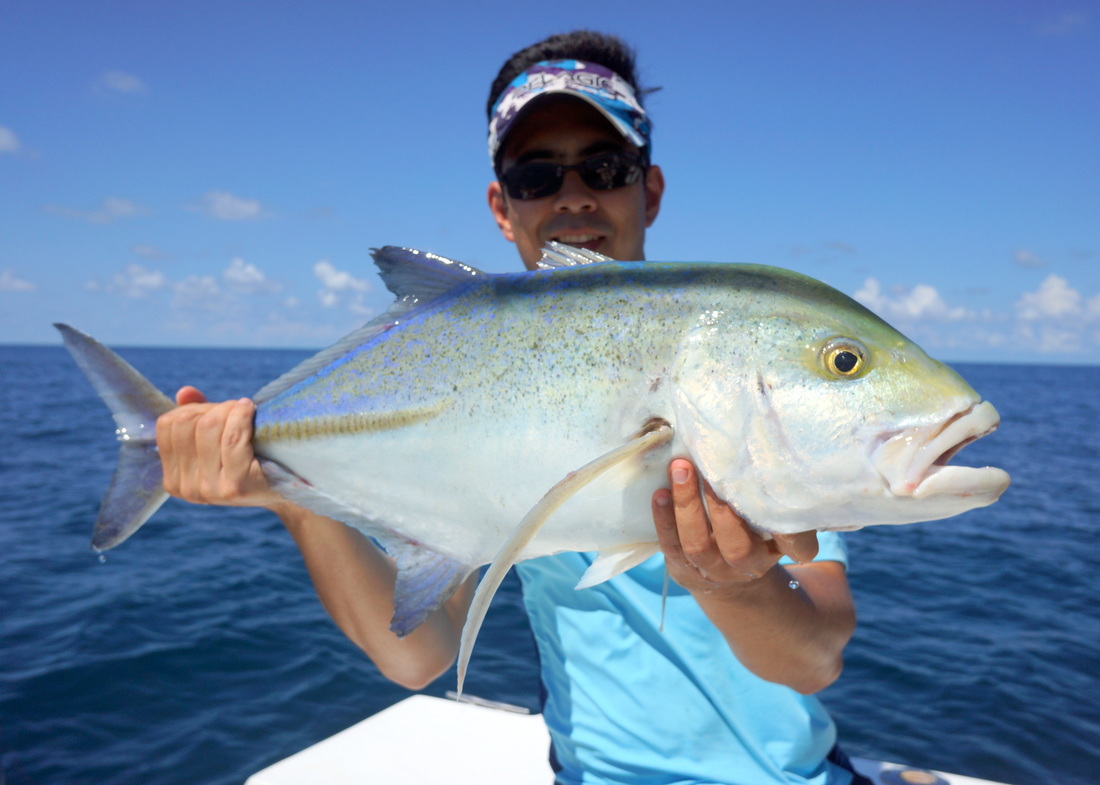
Locals also love Yellowspotted Trevally for their great qualities as a game fish and their delicious meat, which makes them a popular choice. It doesn’t matter which Trevally you catch, you’ll hit the jackpot no matter what it is.
Manini (Convict Tang)
It is one of the most popular and easy to catch members of the Tang family.
A large number of them move in groups around the coral reef at about 90 feet in depth, usually sleeping under rock formations or in small holes, which makes hunting them at night a very good choice.
Manini are silvery in color, have a yellowish tinge to them, and they have black vertical lines on their body. It is not uncommon for them to grow up to 12 inches long and weigh up to 3 to 4 pounds on average.
Usually at night is the best time to catch them. The best place to find them is under rocks, where they sleep.
Kupipi (Blackspot Sergeant)
An excellent member of the sergeant family, this fish is grayish brown in color. This fish is extremely solitary and likes to chase other fish away.
There’s usually a dark vertical band along the sides.
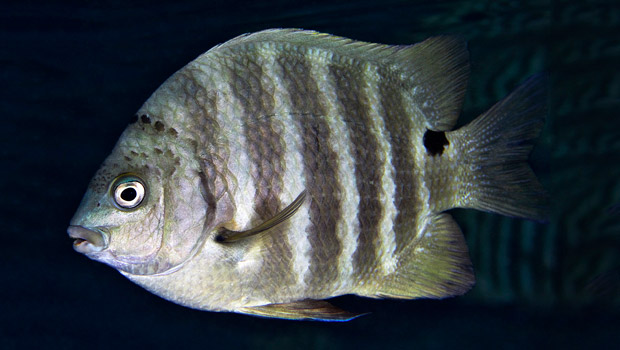
Rock crevices and boulders are great places to catch this fish. It usually weighs up to 1 pound and measures about 9 inches long. One thing it likes is to have all the space to itself.
Fish don’t dare enter its territory. It’s fun to go after the Kupipi, but if you don’t catch it, you don’t have any other targets.
Tuna
It is in the midst of summer that the Yellowfin Tuna season peaks.
Time to gear up and go hunting for these notorious rivals in the deep blue.
With their muscular bodies and strong wills, Yellowfin Tuna aren’t going down easy. These giants can weigh up to 300 pounds and are one of the most massive tuna species.

Yellowfin tuna spearfishing is a serious endeavor – even when they’re small.
The Yellowfin Tuna, which are known locally as Ahi, do not jump as dramatically as Mahi Mahi, but they are much faster and more unpredictable than their counterparts.
When it comes to Ahi, even the most seasoned spearos need some help. That’s why it’s a good idea to work with a guide. Especially if it’s your first time catching Yellowfin Tuna.
Snappers and Groupers
These guys are pals for a reason – they both live around reefs. Several species are also invasive in marine environments, such as Roi (Bluespotted Grouper) and Toau (Blacktail Snapper).
In addition to killing the local fish, they wreck the ecosystem as a result. Then what could be a better way to begin your spearfishing journey than by making a contribution to the greater good?

You can also try your luck fishing for native fish such as Uku (Blue-Green Snapper) if you want to stay away from the invaders. It is clear that they are intelligent and hunt-worthy adversaries.
It is likely that you will have to spend some time figuring out the best approach that works for you. If you develop the perfect strategy for achieving your goals, you will be able to achieve success.
You can find some tricks up your sleeves that the locals will be able to share with you if you need help.
Mahi Mahi
If you go further away from the flats and reefs and go out into the open ocean, you’re in for an even better treat.
You’ve got nothing to fear from Mahi Mahi. Their relentless nature makes them famous. Getting to the deep blue level with them makes sense.
However, deep waters come with challenges. The pelagic zone will put your skills to the test.
Since Mahi Mahi swim closer to the surface, spearfishing is easier for beginners.

It won’t require you to dive deep to find them, but you’ll need to swim, aim, shoot, and fight them all at once.
It’s tough, but it’s worth it. Especially if it’s a 50-pounder.
The Different Types of Spearfishing
Hawaii Spearfishing Guide
Take a look at your various spearfishing options in Hawaii and what they have to offer.
Shore Spearfishing
It’s easy to jump headfirst into the water from the beach. However, you can still get to deep waters from the beach.
You can go straight to 80 feet of depth by picking a headland. Spearfishing from the shore is popular because you can pick your best spots without having to use a boat.
Deep Water Spearfishing
The water here is clear and deep, so you’ll need a boat. In order to attract big fish, such as tuna, wahoo, and marlin, using chum (pieces of fish in the water) is the idea.
Spearfishing like this is for pros only. It’s possible to go all day without finding a fish. For beginners, it’s not a good idea.
Boat Spearfishing
There are countless small islands in Hawaiian waters where you can take a boat and get unfettered access to a lot of fish.
Besides the shore, the reefs are a great place to find different species of fish.
Spearfishing in Hawaii: Things not to do
You can’t spearfish these species!
You’re welcome to spearfish on Hawaii’s islands. If you follow the rules regarding size and bag restrictions, you can spearfish for almost any fish.
Meanwhile, spearfishing is illegal for a few species. The majority of them consist of lobsters and crabs:
- Ula (Spiny Lobster)
- Kuahonu Crab
- Ula Papapa (Slipper Lobster)
- Samoan Crab
- Kona Crab
- Kuahonu Crab
Here are don’ts:
- Do not spearfish if you are not an expert.
- If you are going spearfishing on Oahu, make sure to check the regulations before doing so. It is illegal to spearfish within 100 yards of a fish hatchery or within 200 yards of a schoolhouse.
- You cannot take more than 20 fish per day and must be 12 years old or older to do so.
- Oahu is famous for its great recreational spots for beginners and experts alike.
Spearfishing Gear Hawaii
It can be overwhelming to buy your first spearfishing equipment online if you’re a beginner. But don’t let that stop you from having a blast.
You can start with a simple checklist and expand it as you go. You don’t have to worry about forgetting anything, either.
Here are the essentials.
Mask and snorkel
These are the cornerstones of spearfishing, along with the speargun. Make sure your mask has shatterproof tempered glass, and consider tubes with dry-top snorkels for steady airflow.
Your goal is to find your game fish as long as possible without being interrupted.
Polespear or speargun
On the same hunt, you can use one or both. However, a polespear might be better for a beginner since it’s easier to handle.
When you’re comfortable with a polespear, you can use a speargun. This will give you the extra range you need to grab Omilu.
Wetsuit and fins
You won’t need a thick wetsuit unless you’re exploring the deep blue during cold fronts. In case you’re going spearfishing occasionally, you don’t have to spend a lot on fins.
However, if you’re going freediving, you’ll need them. So you’re good to go with a 3mm suit and plastic fins.
Gloves and knife
Don’t forget how important your hands are to the whole thing. If you handle the speargun or any fish you catch, wear gloves to protect your hands.
To move seamlessly through seaweed and cut fishing lines, use a knife.
Dive flag
If you’re spearfishing, don’t forget to use a dive flag to mark your position. Put it on the water’s surface to let others know where you are and to help them navigate.
5 Bonus Tip for Successful Spearfishing in Hawaii
- The best fish to spear in hawaii are the kuhli, the opah and the ulua.
- There’s no minimum or maximum age limits. You need to be able to swim and follow directions.
- Oahu spearfishing charter allows you to go on group excursions as well as private charters for more intimate trips with friends and family members.
- Take care of your equipment so that it lasts longer.
- Be aware of currents because they may make it difficult to retrieve a speared fish from deep water.
Bottom Line:
So, you’ve learned a little bit about the basics of spearfishing in Hawai’i. You know what fish you can get, where to go and what you need to bring.
But don’t forget that safety is always first and foremost!
Hawaii is a great place to spearfish and there are many different types of fish that you can hunt.
Spearfisherman are lucky to be able to enjoy this amazing activity. Be sure to check the regulations before going out into the water with your speargun.
Spearfishing in Hawaii can be a lot of fun and is worth checking out!
FAQs
How deep can I dive for spearfishing in Hawaii?
The maximum depth for spearfishing in Hawaii is 100 feet.
What types of fish can I catch while spearfishing in Hawaii?
Some common species to catch in Hawaii include uhu (parrotfish), moi (Pacific threadfin), and kahala (amberjack).
Is spearfishing in Hawaii legal?
Yes, spearfishing is legal in Hawaii as long as you have a valid fishing license and follow all state and federal fishing regulations.
What are the best times of day to go spearfishing in Hawaii?
Generally, early morning and late afternoon are the best times to go spearfishing in Hawaii as the water is clearer and the fish are more active.
What safety precautions should I take while spearfishing in Hawaii?
Always dive with a buddy, use proper dive flags and signals, and never hold your breath while diving.
How do I properly handle and clean my catch?
After catching your fish, you should immediately bleed and cut it, then rinse it in fresh water and store it on ice.
Where are the best spots for spearfishing in Hawaii?
Some popular spearfishing spots in Hawaii include the Kona Coast, Molokai, and Kauai.
Can I spearfish in protected marine areas in Hawaii?
No, it is illegal to spearfish in marine protected areas in Hawaii.
Is there a limit to how many fish I can catch while spearfishing in Hawaii?
Yes, there are daily and seasonal limits on the number of fish you can catch in Hawaii. Check the state fishing regulations for specific limits.
